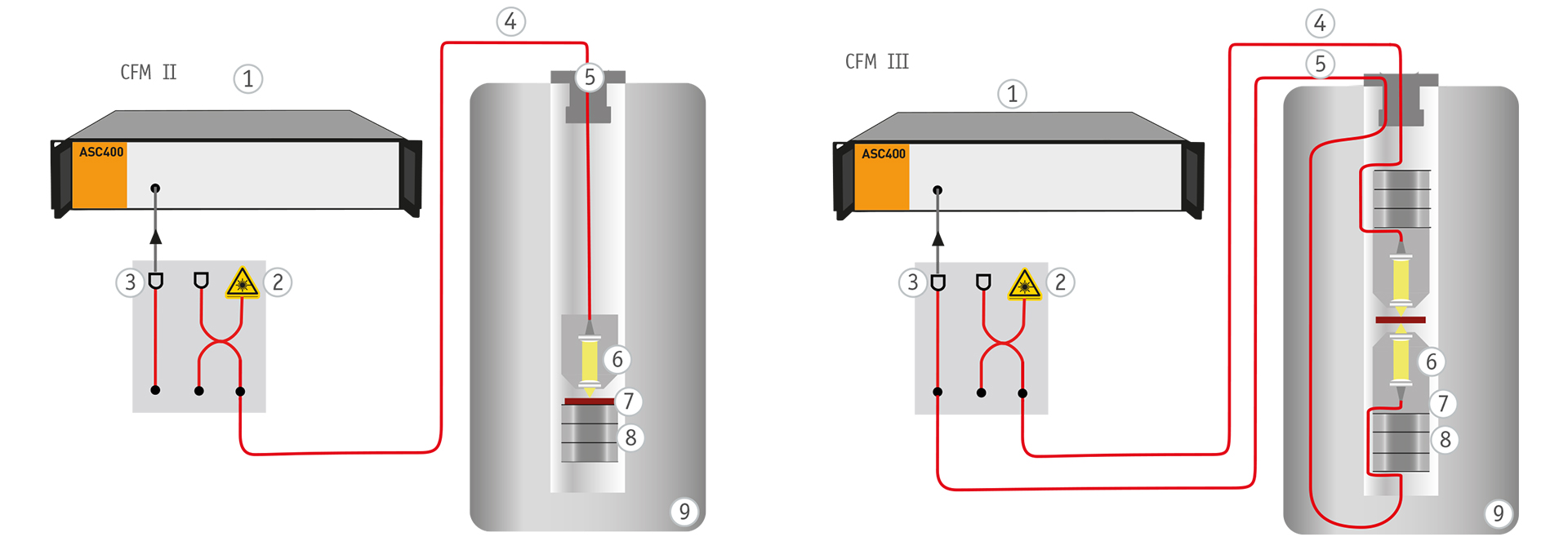Confocal Microscopy (CFM) | Fiber-Based Setup
While the free-beam based attoCFM I offers a maximum amount of flexibility, its fiber-based counterparts attoCFM II and attoCFM III offer ultimate long-term stability onto the sample, and back up to the detector. The accessible wavelength range onto the sample, and back up to the detector. The accessible wavelength range for both the excitation and detection is thus limited by the range of the single mode fiber used.
attoCFM II
The key feature of this system is its unprecedented stability allowing long-term investigations over many weeks without readjustment. This can become crucial when working with single photon emitters (e.g. quantum dots), and when tuning several external parameters (like magnetic field or gate voltage) over long periods.
A single-mode fiber is used for both excitation as well as detection, sharing the optical path all the way from the fiber coupler inside the laser detector module (LDM600), down to the low temperature objective, onto the sample, and back up to the detector. The accessible wavelength range for both the excitation and detection is thus limited by the range of the single mode fiber used.
attoCFM III
This is the system of choice for customers who are working with transparent samples in transmission mode. Here, the confocal microscope essentially consists of two separate attoCFM II: one single-mode fiber for excitation, and one separate fiber and low temperature objective for detection. Using two different single mode fibers for the two optical paths enables access to a larger and more flexibel wavelength range than with the attoCFM II.

- ASC400 scan controller
- LDM600 laser source
- LDM600 detector
- Single mode fiber
- Vacuum feedthrough fiber
- Low temperature objective
- Sampler
- xyz positioning (optional scanner)
- Cryostat

